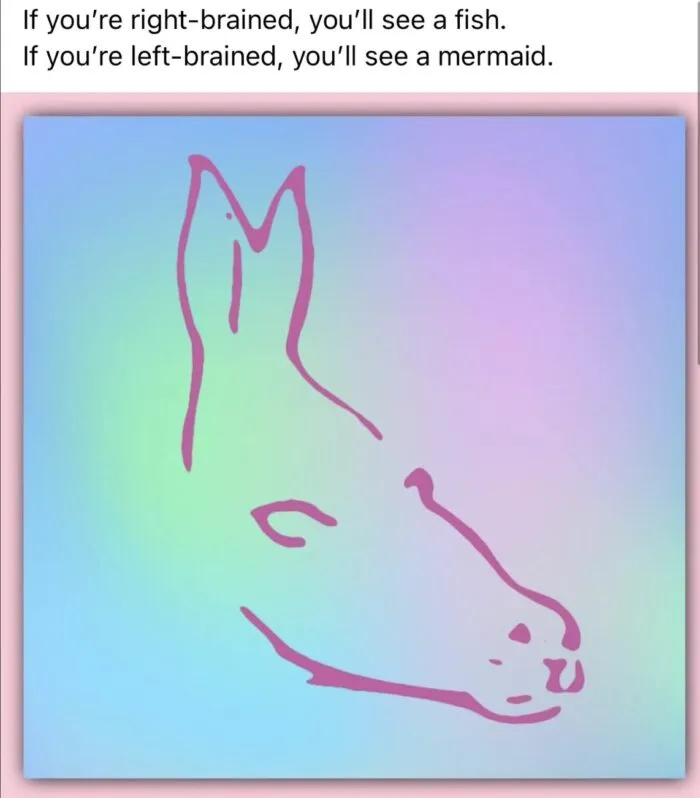The internet loves an optical illusion. Whether it's a blue or gold dress, a vase or two people facing each other, or most recently, an image that could be either a fish or a mermaid.
This new viral optical illusion offered up the premise that if you're right-brained, you'll see a fish and left-brained people would see a mermaid.
However, there are two problems with this. The first is that, while we in the Science Focus team have our bets firmly set on it being an aardvark, the rest of the internet seems to mostly think it's a donkey or a seal - neither of which were the available options.
The second is that the theory of right-brained and left-brained people has been frequently debunked. This belief states that individuals who are 'left-brain thinkers' are more logical and analytical, whereas 'right-brain thinkers' are creative and intuitive.

"Whether you see a mermaid, a fish, a donkey or a seal – or something else entirely – one thing is for sure, it says absolutely nothing about whether or not you are right-brained or left-brained," says Christian Jarrett, a leading cognitive neuroscientist.
"That's because the very notion that some of us are right-brained or left-brained is a load of old neurobunk. The roots of the myth lie in the fact that our brains are divided into two hemispheres and that there is so-called lateralisation of function in the brain - for instance, most people show more language-related activity in the left brain hemisphere compared with the right."
The way that the brain regions perform tasks is actually much simpler and universal than that. "The two brain hemispheres are joined by a massive bundle of connective fibres and we use both of them together for most tasks," says Jarrett. "What's more, brain scan studies have failed to find any evidence that some people are in any sense consistently more dependent on one of their brain hemispheres rather than the other, compared with the average."
While the image has nothing to do with sides of the brain, those who see a donkey or seal are actually right. The image is originally from a 2006 study into motivational influences on visual perception. The image is purposely vague, with the research describing it as 'a donkey-seal'.
Read more:
